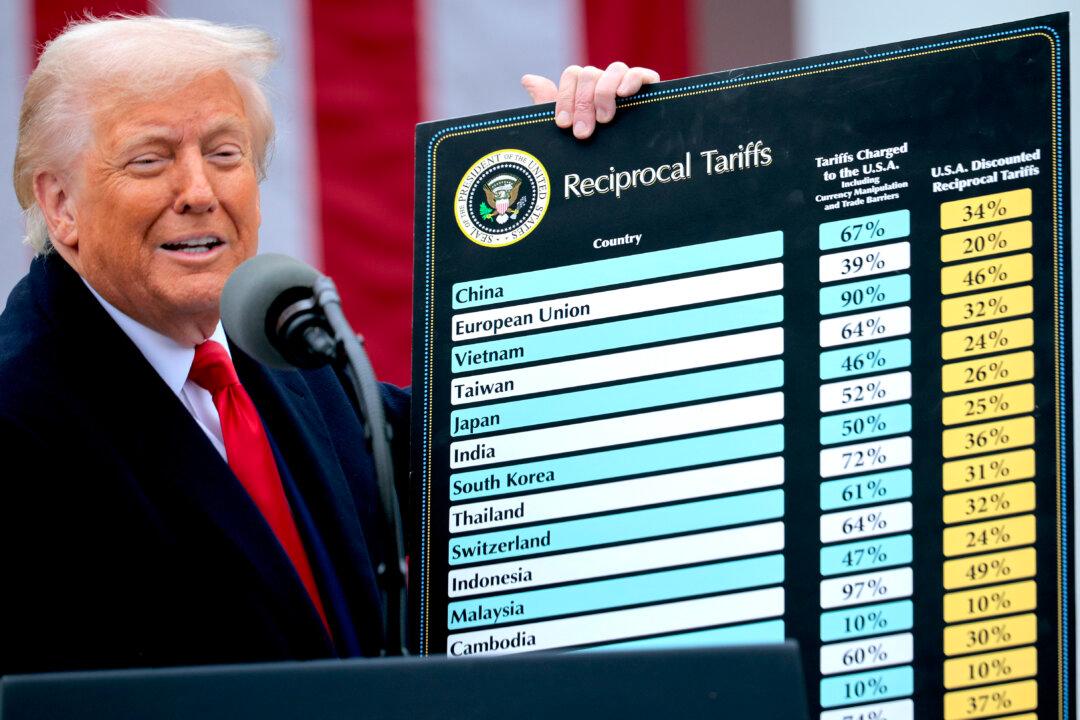NEW YORK—President Donald Trump and Japanese Prime Minister Shinzo Abe on Sept. 25 signed an initial trade deal that opens up markets to $7 billion worth of U.S. agricultural goods.
On the sidelines of the 74th session of the U.N. General Assembly, Trump held a bilateral meeting with Abe to announce the first stage of a comprehensive trade agreement between the United States and Japan.
The agreement will either reduce or eliminate tariffs for certain U.S. goods including beef, pork, wheat, cheese, corn, wine, blueberries, cranberries, almonds, and walnuts.
“This is a huge victory for America’s farmers, ranchers, and growers and that’s very important to me,” Trump said. “It’s very important that you report this news as opposed to not reporting it.”
According to the USTR, with the new agreement “over 90 percent of U.S. food and agricultural products imported into Japan will either be duty-free or receive preferential tariff access.”
“The deal we are announcing today will reduce our chronic trade deficit built up and taken effect over many, many years of dealing with other governments and other administrations,” Trump said.
In return, the United States will eliminate or reduce tariffs on certain “agricultural imports from Japan valued at $40 million in 2018,” according to the USTR. The United States will also reduce or eliminate tariffs on some industrial goods from Japan, including machine tools, steam turbines, bicycles, and musical instruments.
Auto Tariffs
The announced deal doesn’t cover trade commitments on autos or address pending U.S. Section 232 tariffs.Lighthizer said Trump has no plans to impose Section 232 tariffs on Japan, as long as both sides “operate in good faith.”
The United States and Japan will continue negotiations on remaining items including automotive tariffs to finalize a comprehensive free trade agreement.
‘Gold Standard’
Both sides also reached a separate agreement on digital trade, which has provisions similar to the rules set by the new U.S.-Mexico-Canada trade deal.“The digital trade agreement is very much like the USMCA. It’s the gold standard. It’s, you know, the best quality agreement you can have,” Lighthizer said, adding that there was $40 billion worth of digital trade between both countries.
Key provisions of the digital trade agreement include the prohibition of data localization and commitments on cross-border data flows.
During the meeting, Trump congratulated Abe on his national election victory in July.
“A lot of people say that it was only his friendship with President Trump that got him that tremendous victory,” he said.
Speaking at the bilateral meeting, Abe said the trade deal was “a win-win solution for Japan and the United States.”
He added that U.S. trade officials led by Lighthizer were “very, very tough throughout the negotiations.”
In August, Trump and Abe announced they had reached an agreement on “core principles” of an initial trade agreement, releasing a few details on the terms.
In 2018, U.S. exports to Japan totaled $121 billion, with $76 billion in goods and $45 billion in services, according to the USTR. U.S. imports totaled $179 billion, with goods accounting for more than 80 percent of imports, most notably motor vehicles and parts (30 percent).
The size of the bilateral goods trade deficit has been a source of tension for the United States, prompting the Trump administration to start new trade talks with Tokyo in 2018. The USTR in a report cited various nontariff barriers in the Japanese market as a source of the trade imbalance.





